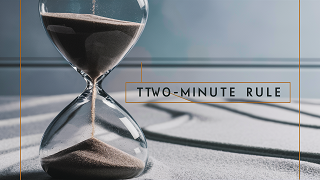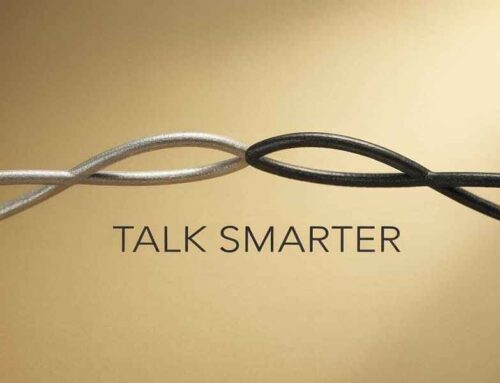
The Two-Minute Rule
In a world characterized by perpetual busyness and information overload, the art of productivity and time management has become a coveted skill. Within this realm, the Two-Minute Rule emerges as a straightforward yet incredibly effective technique for conquering tasks, boosting efficiency and minimizing procrastination.
What is the Two-Minute Rule?
The Two-Minute Rule is a deceptively simple principle that is remarkably potent in its application. The essence of the rule is straightforward: if a task can be completed in two minutes or less, do it immediately. Rather than adding it to a to-do list or postponing it, the Two-Minute Rule emphasizes swift action.
The fundamental idea is rooted in the understanding that it is often more time-consuming and mentally taxing to record, delay and later revisit small tasks than to take immediate action.

Benefits of the Two-Minute Rule
The Two-Minute Rule offers a multitude of benefits, making it a game-changer for personal and professional efficiency:
- Reduced Procrastination: By addressing minor tasks immediately, you eliminate the temptation to procrastinate or become overwhelmed by an ever-expanding to-do list. It takes the “I’ll do it later” mentality out of the equation.
- Enhanced Focus: The rule encourages laser-like focus on the task at hand. Since you handle it right away, you maintain your current level of concentration instead of switching to a different task.

- Mental Clarity: Rapidly completing small tasks frees your mind from the mental clutter of unfinished business, allowing you to channel your cognitive resources toward more substantial endeavors.
- Time Optimization: Those fleeting moments between major tasks can accumulate over the course of a day. The Two-Minute Rule ensures you make the most of these often-underutilized time pockets.

- Sense of Accomplishment: Swift task completion leads to a sense of accomplishment, providing motivation and momentum for more substantial projects. It’s a snowball effect where success breeds success.
How to Use the Two-Minute Rule Effectively
The Two-Minute Rule is a powerful technique when employed strategically. Here are steps to leverage it effectively:
- Identify Two-Minute Tasks: Recognize tasks suitable for this rule. These are typically quick, straightforward and non-critical activities.
- Prioritize by Context: Keep a running list of Two-Minute Rule tasks based on the context or setting. For instance, you might have a list for work-related two-minute tasks and another for personal ones.

- Integrate It: Seamlessly integrate the Two-Minute Rule into your daily routine. Whenever you find yourself with a spare moment, consult your list and tackle one of the tasks.
- Batching: To make the most of it, consider “batching” multiple two-minute tasks together. This minimizes context-switching and enhances efficiency.
- Evaluate and Adjust: Periodically assess your experience with the Two-Minute Rule. Refine your list, update it and adapt it to your evolving needs.

In conclusion, the Two-Minute Rule is a time-tested technique that harnesses the power of small but impactful actions. By handling quick tasks immediately, you free yourself from the cognitive load of deferred responsibilities and gain a sense of accomplishment.
It’s a strategy that highlights the importance of seizing the moment and optimizing even the shortest intervals for productivity. In a world where every moment counts, the Two-Minute Rule is a potent tool for individuals seeking to master their time and enhance their efficiency.
Additional Reading
Getting Things Done by David Allen: This foundational book establishes a system for capturing tasks, organizing them, and reviewing them regularly, reducing mental clutter and ensuring you never forget anything important.
The 7 Habits of Highly Effective People by Stephen R. Covey: Covey’s classic dives deeper into habits that contribute to overall effectiveness in life, including prioritizing, developing win-win solutions, and self-renewal.
Eat That Frog! by Brian Tracy: Tracy’s book hones in on tackling procrastination. The core message is to prioritize your most difficult task (the “frog”) first thing in the day to gain momentum for the rest of your workload.
Deep Work by Cal Newport: Newport’s Deep Work emphasizes the importance of focused, uninterrupted work sessions for accomplishing complex cognitive tasks. The book explores strategies for cultivating deep work habits and creating a productive environment.
Essentialism by Greg McKeown: McKeown’s Essentialism advocates for doing less but better. This book highlights identifying and focusing on the truly essential tasks that contribute most to your goals, streamlining your workflow for greater achievement.














